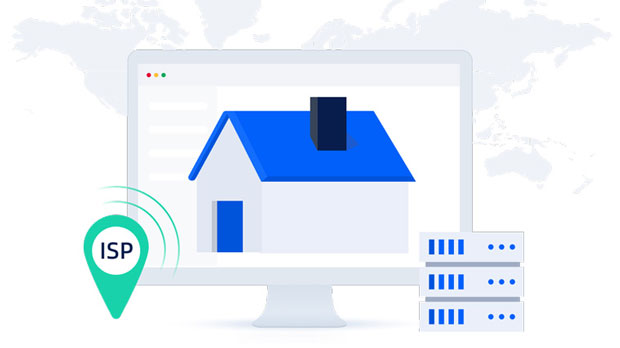Obtaining stable and reliable socks5 proxies from websites is a highly valuable process for those who require privacy, security, and fast internet access. Whether you're engaging in web scraping, managing multiple social media accounts, or ensuring anonymity while browsing, Socks5 proxies can play a crucial role. However, acquiring a high-quality proxy is not as simple as it may seem. It's important to understand the right methods, how to identify trusted providers, and what factors contribute to the reliability of these proxies. In this article, we will delve into the strategies for obtaining stable Socks5 proxies, ensuring your online activities remain smooth and secure. What are Socks5 Proxies?Before we dive into how to acquire Socks5 proxies, it's important to understand what they are and why they are valuable. A socks5 proxy is a type of internet protocol that facilitates data transmission between a client and a server, allowing users to hide their original IP addresses. It provides more flexibility and security compared to earlier proxy protocols like Socks4 or HTTP proxies. Socks5 proxies are versatile, supporting various types of traffic including HTTP, FTP, and even peer-to-peer protocols like torrenting.The key benefit of Socks5 proxies is that they are capable of handling a range of internet traffic without modifying it. This results in a more stable and secure browsing experience, which is essential for tasks like web scraping, accessing restricted content, or maintaining online anonymity.Why Stability is Crucial for Socks5 ProxiesNot all Socks5 proxies are created equal, and stability is one of the most critical factors to consider when obtaining them. Stability refers to the proxy's ability to maintain a consistent connection without dropping packets or causing delays. Unstable proxies can lead to slow performance, interrupted connections, or even getting blocked by the websites you're trying to access.For high-demand tasks, such as managing several accounts or conducting large-scale data extraction, an unreliable proxy can severely hinder your productivity and efficiency. Furthermore, some websites actively block or limit traffic from suspicious or unstable IP addresses, making a reliable Socks5 proxy even more important.How to Obtain Stable Socks5 Proxies from Websites?Obtaining stable Socks5 proxies requires a methodical approach to ensure you're selecting high-quality sources. Here are several strategies to guide you through the process:1. Look for Established Proxy ProvidersThe first step to obtaining stable Socks5 proxies is to look for reputable proxy providers. An established provider with a proven track record is more likely to offer reliable proxies. These providers typically have dedicated infrastructure and support teams, ensuring that their proxies are regularly maintained and optimized for stability.While it may be tempting to go for free proxy services, they often come with numerous issues such as unreliable uptime, slow speeds, and limited support. Investing in a reputable provider, even if it involves a small fee, can save you time and ensure that you receive high-quality Socks5 proxies.2. Check for Proxy Pool SizeA larger proxy pool is often a good indicator of stable and reliable Socks5 proxies. A provider that offers a broad range of IP addresses spread across various locations can offer more flexibility and reduce the risk of getting blocked. Larger pools mean you're less likely to run into congestion issues or share an IP with other users, which can negatively affect performance.When choosing a provider, verify how extensive their proxy pool is and whether they offer rotation options. Proxy rotation ensures that your IP address changes periodically, reducing the chance of detection by websites.3. Analyze the Provider’s Reputation and User ReviewsBefore committing to any proxy provider, it's essential to conduct thorough research on their reputation. This involves reading reviews and testimonials from other users. Forums, online communities, and independent review sites can provide valuable insights into the reliability of the provider.Look for feedback that discusses the performance and reliability of the provider’s Socks5 proxies. Positive reviews regarding uptime, speed, and customer support are indicators that the provider offers stable proxies. Negative reviews, on the other hand, should raise red flags.4. Test Proxy Stability and SpeedMost reputable proxy providers allow users to test the performance of their Socks5 proxies before making a purchase. This is an excellent opportunity to test the stability and speed of the proxies. You should check for issues like slow response times, frequent disconnections, or excessive latency.During the testing phase, use various tools that can simulate your intended tasks, such as browsing, web scraping, or accessing geo-restricted content. If you notice any interruptions or speed bottlenecks, it might be a sign that the provider's proxies are not up to par.5. Evaluate Customer SupportGood customer support is essential for any proxy service. Whether you're experiencing connectivity issues, need advice on choosing the right proxies, or require troubleshooting assistance, having reliable support is vital. Check whether the provider offers 24/7 customer service and what kind of communication channels are available (live chat, email, phone, etc.).Providers with strong customer support are often more committed to ensuring their proxies remain stable, as they actively resolve issues that could impact users’ experience.6. Opt for Proxies with Encryption and Security FeaturesSecurity features are an essential aspect of stability. Stable Socks5 proxies should come with built-in encryption protocols, ensuring that your internet traffic remains private and secure. The added layer of encryption reduces the risk of data breaches and protects against various online threats.Some proxies also come with anti-censorship features, allowing you to bypass internet restrictions and access blocked content in certain regions. These features contribute to the overall stability of the proxy, ensuring that your online experience remains uninterrupted.7. Monitor the Proxies RegularlyOnce you’ve selected your Socks5 proxies, it’s essential to monitor them regularly. Proxies can become unstable over time due to various factors such as increased traffic, server issues, or network congestion. Using monitoring tools can help you track the performance of your proxies and quickly identify any disruptions.If your provider offers a dashboard or performance analytics, make use of these features to ensure that your proxies remain stable. Regular monitoring also helps you identify when it’s time to switch to a different IP or refresh your proxy list.ConclusionObtaining stable Socks5 proxies from websites is an important step for maintaining a secure and efficient online experience. By focusing on factors such as provider reputation, proxy pool size, and performance testing, you can significantly reduce the chances of encountering unreliable proxies. Always remember to prioritize stability over cost when selecting your proxy service, as this will ultimately save you time and effort in the long run. A stable Socks5 proxy can make a significant difference in the quality of your online activities, whether it’s for browsing, data scraping, or ensuring privacy.
Jan 10, 2025






















































